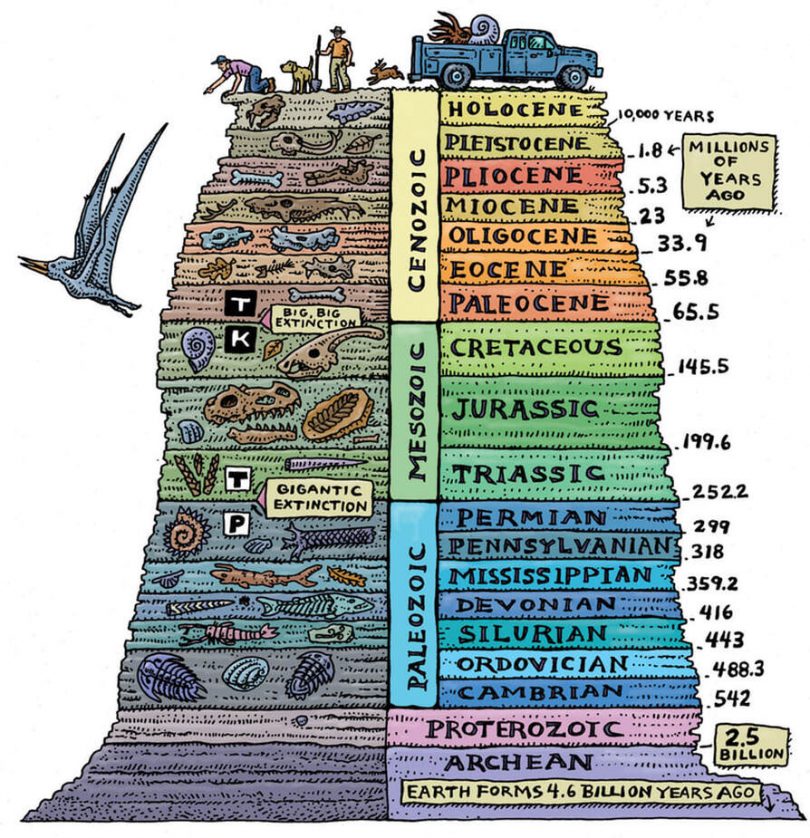“There is no simple generalized animal in the fossil record that proves that organisms develop from simple to complex. It has been suggested that all animals are now specialized and that the generalized forms on which major evolutionary developments depend are absent. In fact, all animals have always been more or less specialized and a really generalized living form is merely a myth or an abstraction.”
George Gaylord Simpson, The Meaning of Evolution
The record indicates (1) Complex organisms emerge without precursors; (2) Many mass extinctions; (3) Forms are found out of assumed order; (4) Most fossilized organisms remain virtually unchanged and alive today; (5) A complete fossil record does not exist anywhere in once place on earth; and (6) Genetics has reveals genomes of simple organisms are greater than supposed complex ones. None of these six evidences related to the fossil record work to support the supposed mechanisms purported to provide all the diversity we find in life today.
Evolutionists recognize that the fossil record is barren of evidence to show evolution of organisms from ‘simple’ to ‘complex’. There are complex organisms from the lowest Cambrian rock layers which each appear suddenly without precursors (intermediate forms). Such “problems” persist at all fossil layers. Once such example is the horseshoe crab which appears suddenly without anything even remotely similar to it in the fossil record.
Humans have witnessed the extinction of a variety of animals including the Dodo bird, the Great Auk, and the Steller’s sea cow. Extinctions continue to threaten animals into modern day caused by factors such as habitat loss, climate changes, coral reef losses, pollution, poaching, over hunting, and other factors. Today, the Sumatran tiger, the giant Panda, and the Asian elephant all are massively threatened species.1 The fossil record indicates several extinction events although never an extinction that resulted in a total loss of all life on earth. Of course, there are animals in the fossil record which are fully extinct today such as dinosaurs.
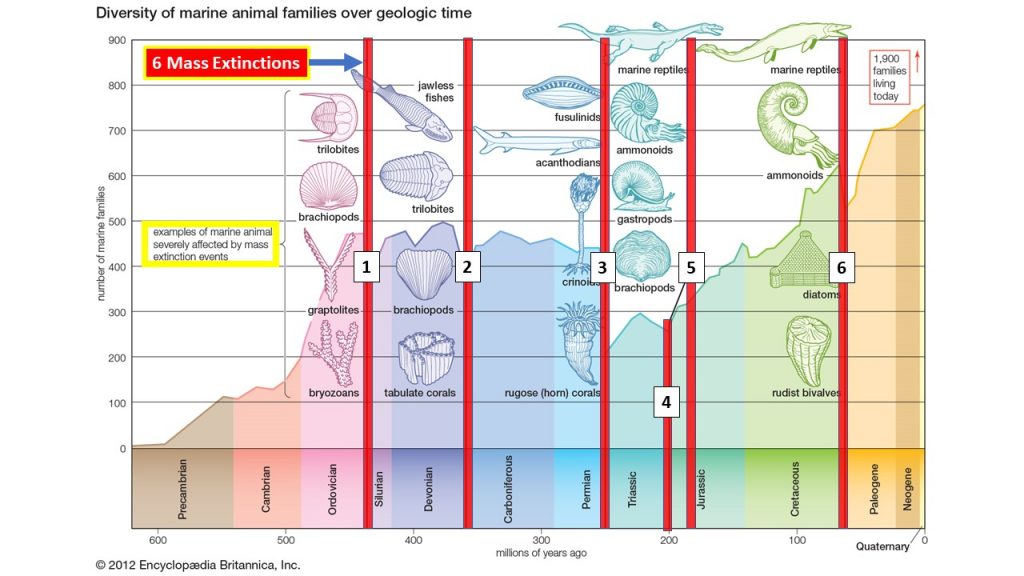
In reality, there are a lot of fossils that are out of order and simply do not fit within the neatly-defined evolutionary order of things paraded in our geology and biology textbooks 2:
Trilobites, which are allegedly 500 myo in the Cambrian strata, have eyes that are far too complex for their place in the fossil record. That is, they have no precursors to their appearance.
Pollen fossils—evidence of flowering plants—were found in the Precambrian strata. According to evolutionists, flowering plants first evolved 160 mya, but the Precambrian strata is older than 550 mya.
Dinosaurs are supposed to have evolved into birds. But Confuciusornis was a true beaked bird that pre-dates the ‘feathered’ dinosaurs that it allegedly came from. It also has been found in the stomach of a dinosaur.
Grass which has been found in fossilized dinosaur coprolites (fossilized dung). But grass is not supposed to have evolved until at least 10 million years after the dinosaurs went extinct.
A dog-like mammal fossil was found with remains of dinosaurs in its stomach—but no mammals large enough to prey on dinosaurs were supposed to exist alongside them.
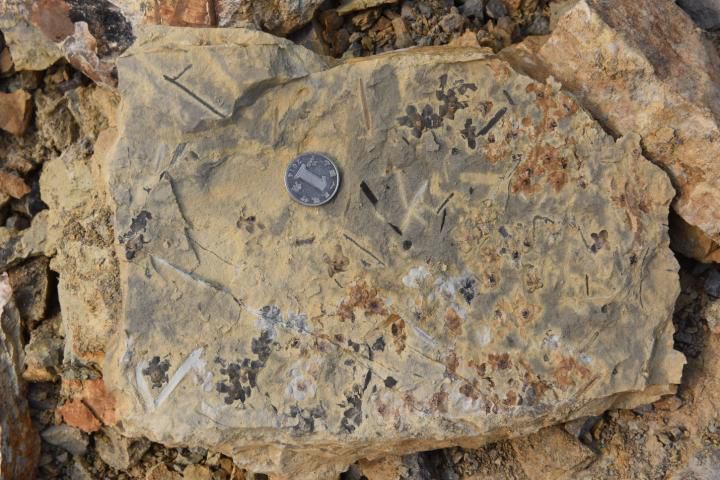
Read more: https://www.smithsonianmag.com/smart-news/fossil-pushes-history-flowers-180971090/#UjyvcXrG31jQBCor.99
Other fossils types such as shellfish are found in numerous layers virtually unchanged. Still other organisms found in fossils all over the world are still alive today such as alligators, sharks, and horseshoe crabs. In fact, it can be stated that at the family level 99% of all organisms captured in a fossil are still alive and well today.
The “evidence” has been garnered spanning geologically isolated regions. The series starts in North America, jumps suddenly to Europe, and then back to America. A complete series of fossils in the correct evolutionary order does not exist anywhere in the world.”
Wysong, R.L., The Creation-Evolution Controversy, Inquiry Press, Midland, Michigan, 1981, p. 455.
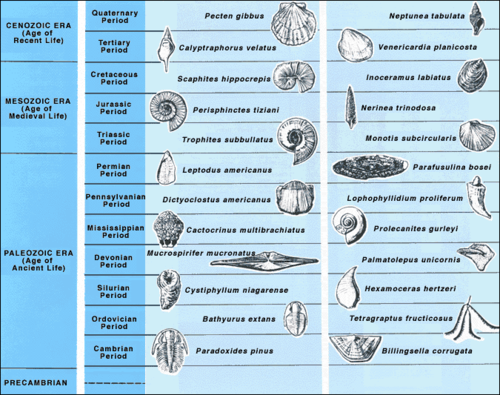
When considering the genome size as evidence of evolution it has been found that flowering plants have the largest DNA genome but they are found to have first bloomed (in fossil record) some “174 million years ago.”
https://www.smithsonianmag.com/smart-news/fossil-pushes-history-flowers-180971090/
Genetics has revealed that the complexity in organisms has little to do with any concepts of “simple”. As an example flowering plants have been found to have the greatest genome size of any living organism.
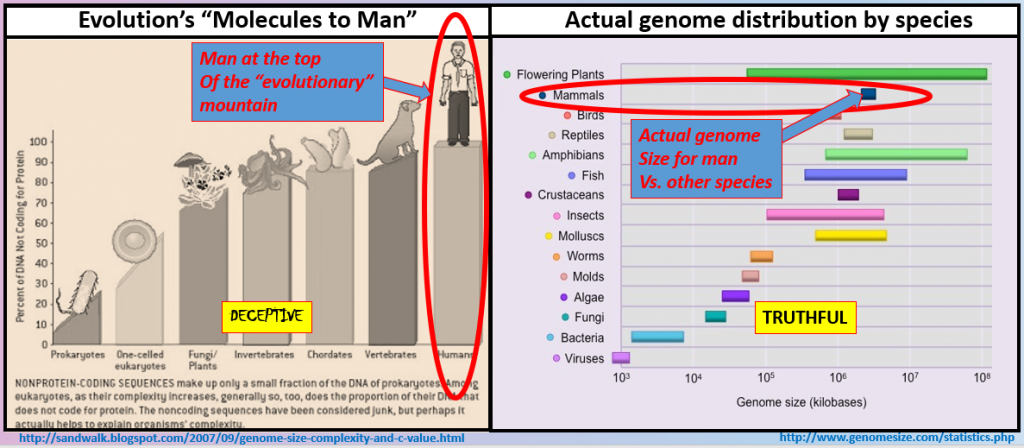
which defy evolutionary expectations.
Punctuated Equilibrium proposed as explanation for fossil record “problem”
One solution to the fossil record “problems” has been theorized which was called Punctuated Equilibrium. This is evolutionary conjecture which proposes that isolated episodes of little to zero ‘evolution’ is later marked by a rapid speciation. In other words, the lack of evolution occurring is what they expect to find! Essentially stating that there is nothing happening, all remains unchanged, and then suddenly change is there. Such as nothing in Precambrian followed by “bang” the Cambrian explosion.
“We know evolution happened not because of transitional fossils …but because of the convergence of evidence from such diverse fields as geology, paleontology, biogeography, comparative anatomy and physiology, molecular biology, genetics, and many more. No single discovery from any of these fields denotes proof of evolution, but together they reveal that life evolved in a certain sequence by a particular process.” (In other words: fossils do not tell the story of evolution so we must look elsewhere.)
https://www.scientificamerican.com/article/the-fossil-fallacy/
The fossil record when used as proof of Darwinian evolution in reality vastly fails to account for any of the promises proposed by the Theory.
1 https://onekindplanet.org/top-10/top-10-worlds-extinct-animals/

